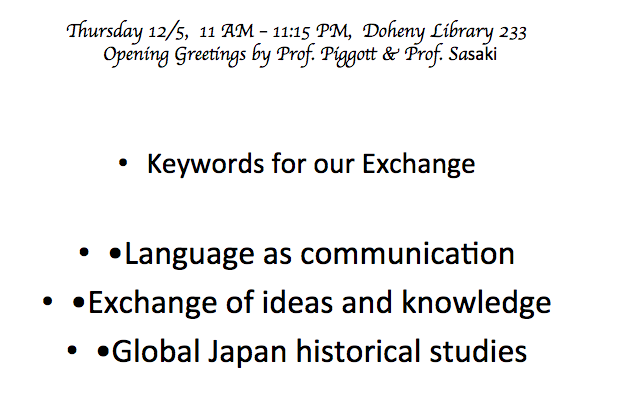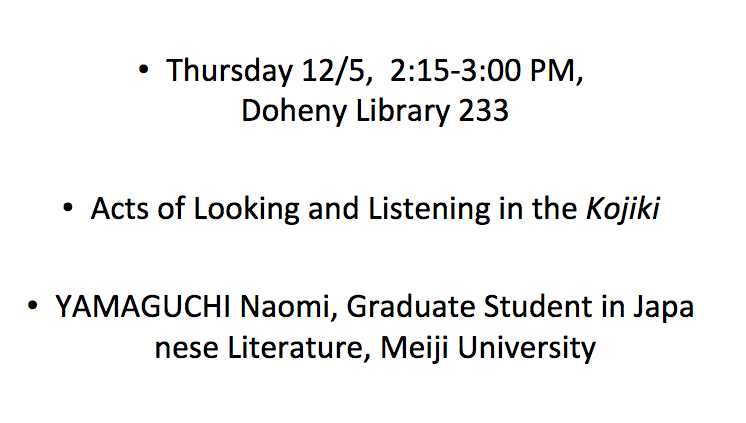Salt is a nutrient essential to human life. As rock salt is difficult to procure in the Japanese archipelago, in ancient times the prevailing system of salt production was to boil down seawater in clay pots to draw out the salt. This presentation focuses on salt production and consumption, and in the process I will also note the special characteristics of the economic foundations of the eighth-century tennō and nobility, as well as the ritsuryō tax system.
In the ritsuryō system, salt was one of the goods collected as tribute (chō). In the Heijō palace and capital ruins, we have found large numbers of wooden slips (mokkan) evidencing goods that were shipped to the capital, and these show that salt was an important tribute good. Many of those wooden tags show that salt was shipped from Wakasa and Suō provinces. However, many clay pots used for salt production that have been found in the Heijō capital are from the Bi-san Seto Inland Sea region (Bizen, Bitchû, Bingo, Sanuki) or from the Osaka Bay area. These were not provinces mandated to provide salt as a tribute item.
In other words, some types of salt brought to Heijō capital were transported with a packaging slip attached, but others were not. Specifically salt that came affixed with a packaging tag was collected and sent as a tax good. Wakasa province was extremely small, but it put tremendous efforts into producing salt to be collected for tribute goods. Furthermore I hypothesize that the Takahashi family, that was traditionally responsible for conducting the religious rites associated with the tennō’s dining needs, had strong ties to Wakasa province. Other provinces that, similar to Wakasa, were small, also had deep connections with the Takahashi, and were characterized by their production of tribute goods. They were Shima, Awa (near Tokyo Bay), and Izu. Their residents gathered seaweed, abalone, and wrasses as tribute. Salt, seaweed, abalone, and wrasses were all important offerings for religious rites. The tennō gathered tribute goods from the entire country to be used as offerings for the religious rites he performed to demonstrate his rulership. Salt gathered as a tribute good in Wakasa symbolically showed the tennō’s reign over the area, and the production process was meant to do just such.
The second-largest numbers of packaging tags, those denoting Suō salt, were all unearthed at the residence of Prince Nagaya, and they are thought to have been affixed to offerings presented from Prince Nagaya’s sustenance residence units (fuko). Since such offerings were brought to the capital as tribute goods, they had tags affixed. At Prince Nagaya’s residence, the salt gathered as tribute from sustenance households was consumed—in other words, royals and nobles obtained their salt from sustenance residence units.
On the other hand, the salt transported without tags from Osaka Bay environs and elsewhere was handled differently than were ritsuryō taxes. Nobles and major temples were proprietors of regions in the mountains that provided fuel (firewood) for the production of salt, and they managed locations for salt production separate from sustenance residence units.
From this outline of eighth-century salt production and consumption, the following points are notable. Under the ritsuryō system, the sustenance residence units that were the economic foundation of the nobility carried on a proprietary system that preexisted the ritsuryô codes. But the management of that earlier system was folded into the activities of provincial governors, and after tribute goods were collected as taxes and sent to the capital, the governors were charged with seeing that the requisite offerings were distributed to each sustenance unit proprietor.
The basic principle of the tribute collection system was to procure offerings for religious rites that would demonstrate support for the tennō. Wakasa, Shima, and other provinces that collected tribute offerings played a special symbolic role, one of which they were very conscious. Also residents of sustenance residence units paid tribute as subjects of the tennō, while the ô provided for aristocrats by giving them tribute offerings. Such practices visualized and elaborated the ideology of the ritsuryō state that placed the tennō at the pinnacle of its organization. One caveat, however: we need to remember that the aristocracy had long managed landholdings separately from sustenance residence units, and such landholdings were not entirely folded into the ritsuryō system.
Presentation PDF
塩は人間が生きていくために欠かせない栄養素のひとつである。日本列島では岩塩などは手に入りにくく、古代においては、土器で海水を煮詰めて塩をとりだす土器製塩が主流であった。本報告では、塩の生産と消費に注目することで、八世紀における天皇や貴族の経済基盤、および律令税制の特徴について考えてみたい。
塩は律令制では調の品目のひとつとされている。平城宮・京跡からは、調の塩につけられていた荷札木簡が多数みつかっており、若狭国、次いで周防国の塩荷札木簡が多い。しかし、平城京でみつかる製塩土器は備讃瀬戸内・大阪湾沿岸のものが多く、荷札木簡から判明する塩貢納国と一致しない。平城京に運び込まれる塩には、荷札をつけて運ばれるものと荷札をつけないものが存在した。
荷札をつけて運ばれた塩は、税としておさめられた塩である。若狭国は非常に小さい国であるが、国をあげて調として納入する塩の生産に取り組んでいた。また、天皇の食膳に関する神事を伝統的に掌ってきた一族である高橋氏が、若狭国との強い関係性を主張している。若狭と同様に小国で、高橋氏との関係が深く、調の生産に特徴をもっている国に志摩、安房、伊豆があり、調として海藻、鰒、堅魚をおさめている。塩・海藻・鰒・堅魚は神事に用いる最も主要な供物である。調には天皇がおこなう神事の供物を全国から集め、天皇による支配を示す意味があり、若狭がおさめる調の塩は天皇の支配を示す象徴的なものとして、生産体制が整えられていた。
二番目に点数の多い周防の塩の荷札は、全て長屋王の邸宅跡から出土しており、長屋王の封戸からの進上物につけられていたものとみられる。封戸の進上物は調として都に運ばれるため、荷札木簡がつけられた。長屋王邸では封戸から調として納入された塩が消費されていたのであり、貴族層は封戸からの収入によって塩を得ていた。
一方、荷札をつけずに大阪湾沿岸などから運ばれてきた塩は、律令による税の収取とは別に流通していた塩であった。貴族層や大寺院は塩生産に使う燃料(薪)の供給源となる山を所有し、封戸とは別に製塩場の経営をおこなっていた。
このような八世紀における塩の生産・消費の様相から、以下のことが指摘できる。律令制下において貴族層の経済基盤として設定されていた封戸は、当初は律令制以前の所領関係を引き継ぐ形で設定されたが、その経営は所在地の国司による行政に組み込まれ、進上物は調などの税として都に納入された後に各封主に分配される仕組みになっていた。調貢納制には天皇の支配を示すための神事の供物を調達するという理念があり、若狭や志摩など、供物の調達を特別に意識づけられた国が象徴的な役割を担った。封戸の民も天皇支配下の公民として調を納入したのであり、貴族は天皇から与えられる恩典として封戸の進上物を受け取ることとされ、天皇を頂点とする律令国家のイデオロギーが表されている。だが一方で、貴族層は封戸とは別に古くからの所領経営を続けており、家政機関がその運営を担った。これらの所領は、律令制の枠組みにおいて規定しきれなかった側面である。












